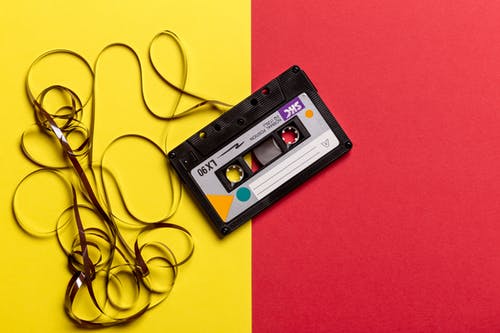The music of FHC brings students closer to the meaning of each lesson

More stories from Natalie Mix

Sophomore Benji Zorn’s fourth hour is filled with chemical formulas, animated lectures, comedically-timed puns, and the snappy beats of Chemistry songs.
These songs, shared with the class by Chemistry teacher Russell Chudy, are chock-full of relevant information embedded into the lyrics; the catchy tune is merely an added bonus.
“[I enjoy Chem songs because they] help me learn,” Benji said. “When I listen to Chem songs, it helps me to remember the stuff that we need to learn in Chem, such as sig figs and polyatomic ions.”
In his years of teaching, Chudy has found the memorable nature of these songs makes humming along hard to resist. They lighten up the atmosphere with their not-so-serious vibe, creating a more interactive learning space.
Students are bound to develop favorite songs; Benji, like others, has singled out his personal preferences.
“[My favorite Chem song is] a [toss] up between ‘Sig Figs’ or ‘Polyatomic Ions’ by Yah Boy Money,” Benji said. “It’s a classic. So I actually think I’m going to go with Yah Boy Money on this one.”
But the songs aren’t just “background or white noise.” They’re important tools to be utilized in the arena of Chemistry.
The lyrics of these songs drift through students’ minds, solidifying important concepts and making certain details hard to forget. This can come to the aid of students who find themselves in a sticky situation during their tests and exams.
“[The music] is like an ‘ear-worm’, drilling information into your brain,” Chudy said. “I will notice some students mentally working their way through a song to help remember the details of a topic or concept in chemistry. It’s amazing.”
The connection between music and memorization is vital. Most students have experienced this pairing throughout their school career, and it’s a method many have learned to maneuver and make use of.
When it comes to recalling and practicing signs, Kimberly Anderson’s ASL students have put this technique to use.
“We use music to really show emotion,” Anderson said, “and that seems to be a really good outlet for [my students]. It’s hard because people challenge, and they’re like, ‘why are you using music for a sign language class?’ But I think it really goes to show, and it helps them practice.”
The abstract essence of fitting signs into songs helps her students grasp them on a deeper level. Both the signs and the songs have a more complex meaning to students through this activity.
Recently, Anderson’s ASL students worked on a song project involving feelings and NMS: non-manual signals. They were asked to choose an instrumental song and craft a story to fit the music, an activity designed to help students connect to the signs on a more sincere level.
“Students are able to take the language more deeply,” Anderson said, “I think [by] using music, it applies to something that’s important to them, and I think they see a little bit more value in it.”
Music helps students grasp a more complete understanding of the subject matter they’re dealing with. However, it can also create an atmosphere more ripe for learning.
U.S. History teacher Laura Stiles allows the influence of music to seep into her classroom, impacting the way her students receive information.
“[Music] takes the edge off,” Stiles said. “When kids come into a room and there’s music on, it’s not this stressful, ‘what do I have to learn? What do I have to regurgitate?’ It’s more like, ‘oh, I can relax a little bit.’ And I think when kids have that little bit of let down, they’re more sponge-like. They’re a little bit more willing to listen sometimes.”
Sometimes, the songs Stiles picks to play are simply her favorites, like the ones on her Stevie Wonder Pandora playlist. Other times, the songs relate back to the time period her students are learning about, shaping a more immersive experience.
Stiles hopes to create playlists for each unit of U.S. History, and she dreams of sharing those playlists with fellow teachers.
“I would love [if on] Teachers Pay Teachers, I could create a playlist and sell my playlists,” Stiles said. “I like having themes for music too. I think all social studies teachers would benefit from a playlist.”
From the beginning of class, to the middle of each lesson, to the ringing of the bell, Stiles shares her love for music with her students.
Each new song played over her speaker, whether it be Roaring 20’s party tunes or darker war-era music, adds to a lesson that isn’t just basic facts and information.
Music teaches. Music connects. Music creates. The varying sounds of unique melodies fill the classrooms of FHC, forging unconventional lessons—unconventional atmospheres.
“[I play music] to make it happy,” Stiles said. “Music soothes the savage beast; have you not seen that Bugs Bunny cartoon? That’s a famous quote. Music is like the soul of the world—the heartbeat of America.”

Natalie Mix is a senior taking on her fourth and final year as a member of The Central Trend. Room 139/140 and the staff of The Central Trend have been...
























































































